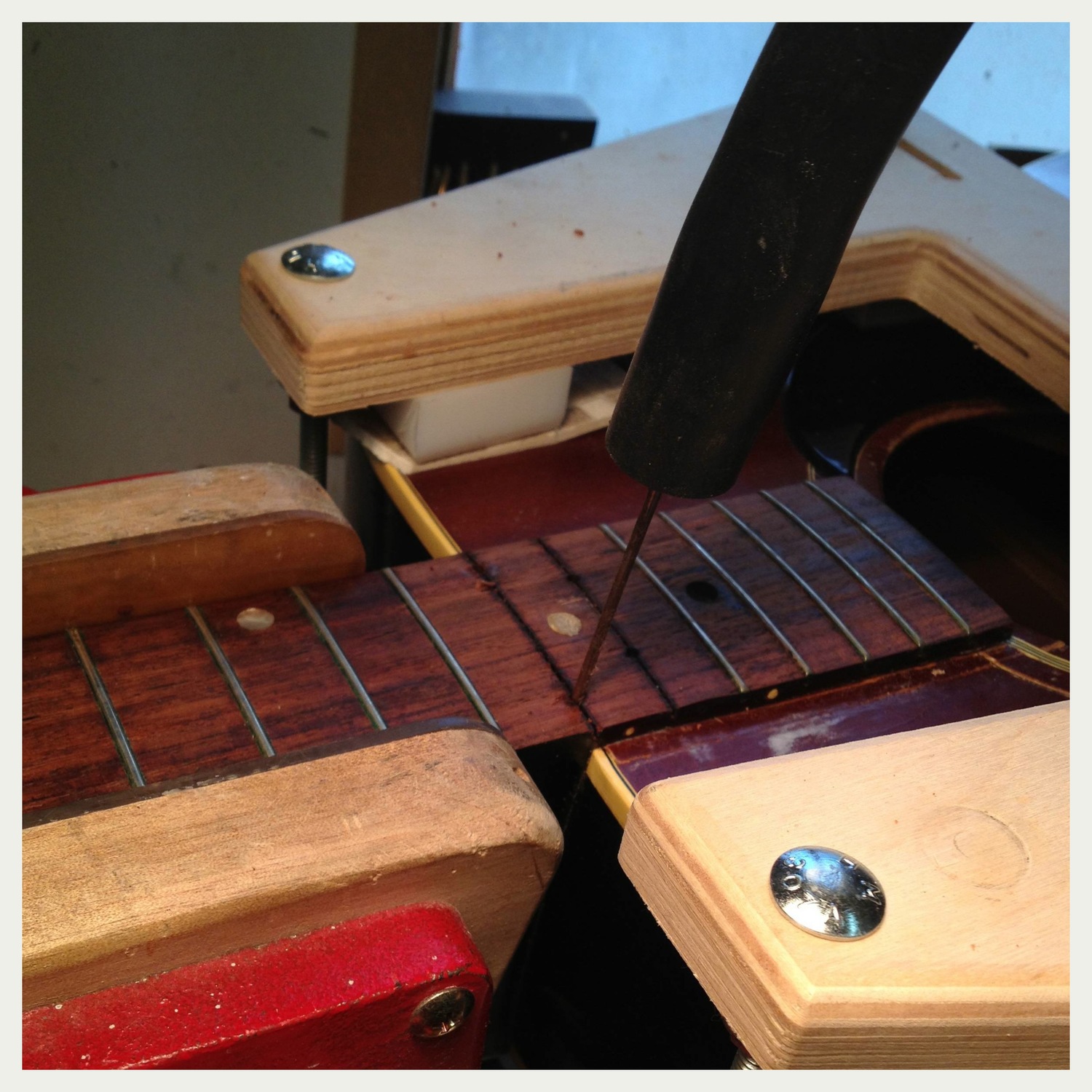This is your guitar, and I am sure you will do what is best for you and your wallet.
I am personally adamantly opposed to "creative" neck resets. By that I mean shaving bridges, planing fingerboards, and other ways of getting an acceptable neck angle that alter the basic geometry of the guitar, and this doesn't just apply to Guilds, but ALL acoustic guitars. The fundamental reason is that once you alter the geometry of the guitar, there is no going back. Whether you shave a bridge, or plane a fingerboard, you cannot ever put the mission wood back, and it will be so for the entirety of the guitar's existence. Argument can be made that shaving a bridge will only require a new bridge to be added later, or planing a fingerboard isn't a big change, but both have their own issues. Shaving a bridge will alter the sound of the guitar by some amount, in that the string height above the fingerboard will change, which does have an effect on the "lever action" that the bridge exerts on the top. Proper string height is NOT just a matter of measuring where the straight edge meets the front edge of the bridge. Not only that, but it also has the potential for weakenging the front edge of the bridge in front of the saddle, increasing probability that the bridge will then crack. Planing a fingerboard is also an issue, as it most often requires also shaving a bridge. Planing a fingerboard in and of itself does NOT change the string angle, all you are doing is changing the clearance of the strings from the fingerboard surface; the string action is still being set by the saddle and nut, so planing a fingerboard will still require the bridge to be shaved as well. I added this edit as I thought about it more: note as well, that planing a fingerboard, as dubious as it is already, will also require removing the frets, planing the fingerboard as some incredibly precise angles, shaving the bridge, reshaping or replacing the saddle and nut, putting the frets back (more than likely, using new frets), perhaps making deeper fret slots in some fret locations, fret levelling, and fret crowning and polishing. With all that work vs. a genuine neck reset, how much money do you actually save? I'd be willing to bet, no much. In return, you end up with what is in essence, a damaged (perhaps beyond repair) guitar.
It is a fact of life that acoustic guitars, by their very design and construction will need a neck reset once enough time has passed. You can monkey around with all of these "band-aid" solution, but what you are doing is damaging the guitar and adversely impacting the value of the instrument. I can see doing some of this possibly being acceptable on some junker guitar, where the work will be more than the value of the guitar will ever be, but on any instrument worth keeping, no way.
